Adapted from Vegan Soups and Hearty Stews for All Seasons. Contrary to culinary myth, the absence of a strong-flavored meat stock does not present a huge challenge to the creation of tasty plant-based soups and stews. Many ethnic cuisines produce classic soups that in their original form are completely vegetarian or vegan. True, almost any soup can benefit from a good stock to boost flavor, but I place fresh and flavorful ingredients and creative seasoning above stock in contributing to the success of a soup.
I would venture to say that most vegan soup recipes will work as well using water (with the help of a bouillon cube or two sometimes) as they will with a homemade or store-bought stock. With all the fresh ingredients and flavorings in vegetable-based soups, this is generally sufficient for achieving a good, rich flavor. Once in a while, especially for brothy soups, I suggest using a 32-ounce carton of low-sodium vegetable broth to boost flavor. There are many good natural and even organic brands of this kind of soup starter. Here are a few more options for creating a good soup base:
Basic Vegetable Stock: If you’re a purist, by all means, make your stock from scratch. You need to allow an extra hour before making the actual soup to prepare and cook this stock. Of course you can make stock ahead of time and even freeze it in portions. There will be cooks who prefer making their own stock, and if that includes you, see the recipe further down in this post.
Water with bouillon cubes or soup base: The easiest and most economical option. Look for a no-salt vegan brand. My favorite is Rapunzel Vegan Vegetable Bouillon. It's packed with flavor, organic, and has no added sodium. Each cube is actually equivalent to two standard-sized cubes.
Vegetable broth powder: A tablespoon of this type of stock enhancer goes a long way in a pot of soup. However, I don't recommend it in the ingredients listings, as it's more difficult to find a low-sodium variety of this product than either bouillon cubes or prepared broths.
Prepared vegetable broth: As mentioned above, I sometimes call for this product for brothy Asian soups. I like to use a 32-ounce aseptic carton (Pacific and Health Valley are two brands to look for, among others), rather than canned broth. But it's your choice; canned vegetable broth can also be a good option, if it is all natural, and low in sodium or salt-free.
Following are a handful of stocks and broths, the first two of which are suitable as soup bases. The remaining ones, in the Asian tradition, make good broths to be eaten on their own or lightly embellished. All are very low in fat and calories — less than 50 calories and less than 2 grams of fat per cup.
Basic Vegetable Stock
This is a basic stock that may be used in place of water in most any vegetable soup to give added depth of flavor. It's also a good way to use up vegetables that are limp or less than perfectly fresh.
Makes: About 6 cups
- 7 cups water
- 1 large onion, chopped
- 2 to 3 cloves garlic, minced
- 1 large carrot, sliced
- 2 large celery stalks, sliced
- 1 medium potato, scrubbed and diced
- 1 cup coarsely shredded white cabbage
- 2 teaspoons salt-free seasoning blend
Place all the ingredients in a large soup pot. Bring to a simmer, then cover and simmer gently over low heat for 40 to 45 minutes, or until the vegetables are quite tender. Strain the stock through a fine mesh strainer. Discard the solids or puree them and add to soup for a thicker consistency.
Onion and Garlic Broth
This broth may be used as an extra-flavorful soup stock or as an alternative, with a little extra kick, to the Basic Vegetable Stock above. It's also a soothing remedy for the common cold!
Makes about 6 cups
- 1 tablespoon olive oil
- 1 large onion, chopped
- 4 to 6 cloves garlic, minced
- ¼ cup dry red wine
- 6 cups water
Heat the oil in a 2-quart saucepan or small soup pot. Add the onion and sauté over medium heat until golden.
Add the garlic and continue to sauté until the onion or leeks brown lightly. Add the wine and water. Bring to a simmer, then cover and simmer gently over low heat for 30 to 40 minutes.
You may leave the onions and garlic in if you wish, or strain the stock through a fine strainer. Discard the solids or puree them and add to soup for a thicker consistency.
Simple Miso Broth
Miso is a nutritious, high-protein product fermented from soybeans and salt (or a combination of soybeans, grains, and salt). Available at all natural food stores and Asian groceries (as is the sea vegetable kombu), pungent-tasting miso is most commonly used to make simple broths. Here’s a basic recipe, which can be considered a soup in itself. All you need to complete it are a few simple ingredients. Note that once the miso is stirred into water, it shouldn’t be boiled. Otherwise, its beneficial enzymes will be destroyed.
Makes about 6 cups
- 1 recipe Basic Vegetable Stock (above) or one
32-ounce container low-sodium vegetable broth plus 2 cups water - 2 strips kombu (sea vegetable), each about 3 by 5 inches
- 2 to 4 tablespoons miso, to taste
Combine the stock with the kombu in a 2-quart saucepan or small soup pot and bring to a simmer.
Dissolve the desired amount of miso in just enough warm water to make it pourable. Stir into the broth and remove from the heat. Let stand for 30 minutes or serve at once, removing and discarding the kombu just before serving.
VARIATIONS
Embellish miso broth with any of the following:
- Diced tofu
- Cooked Asian noodles (or or shiratake or kelp noodles, which need no cooking)
- Finely chopped scallions
- Grated fresh daikon radish or white turnip
- Crisp cucumber, seeded and grated
Basic Dashi (Japanese Kombu and Shiitake Broth)
Like miso broth, dashi is another traditional Japanese stock that may be embellished in a number of ways, or eaten as is. It also makes a good base for certain Asian vegetable soups. Look for the sea vegetable kombu and dried shiitake mushrooms in Asian groceries or in natural food stores.
Makes about 6 cups
- One 32-ounce container low-sodium vegetable broth plus 2 cups water,
or 6 cups water with 2 vegetable bouillon cubes - 2 strips kombu (sea vegetable), each about 3 by 7 inches
- 6 to 8 fresh shiitake mushrooms stemmed and thinly sliced
Combine the broth and kombu in a 2-quart saucepan or small soup pot. Bring to a simmer.
Add the mushrooms to the broth, remove from the heat, and let stand for 30 minutes. Remove the kombu from the broth and discard before serving.
VARIATIONS
Dashi with noodles: Simply cook a quantity of Asian noodles (like soba) in the broth. Once they are al dente remove the soup from the heat, season to taste with natural soy sauce, and serve immediately. Garnish each serving with some finely chopped scallion. Or you can add cook-free noodles like shiratake or kelp noodles once the broth is done and you set it aside to stand for 30 minutes.
Dashi with miso and vegetables: Use the broth to simmer any quantity of thinly sliced vegetables, such as carrot, cabbage, daikon radish, turnip, etc. Once the vegetables are just done, add 2 to 4 tablespoons miso, to taste, dissolved in just enough warm water to make it pourable. Remove from the heat and serve at once.
- See more of VegKitchen’s Green Kitchen tips.



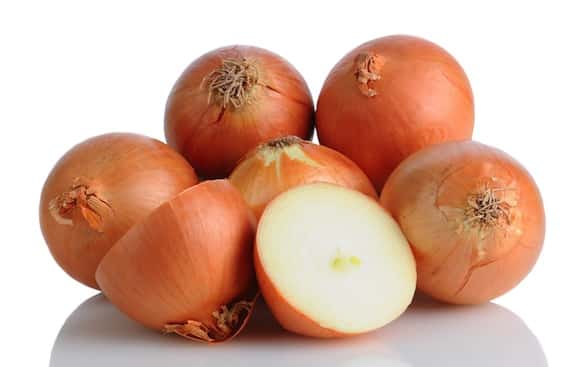
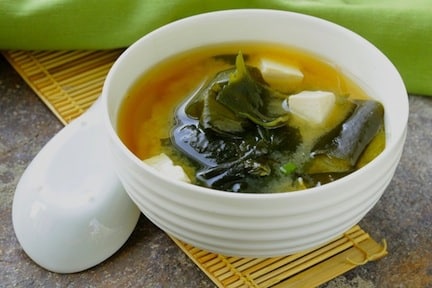
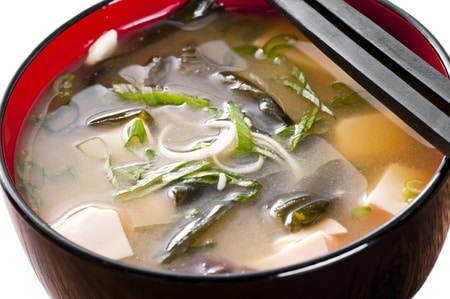

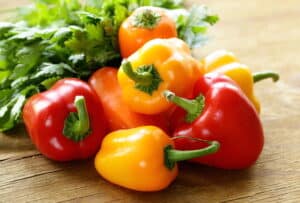
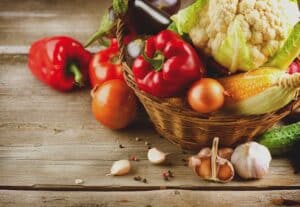
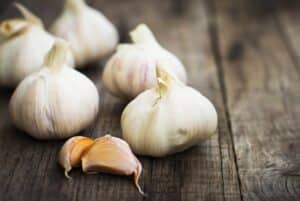
Comments
No Comments